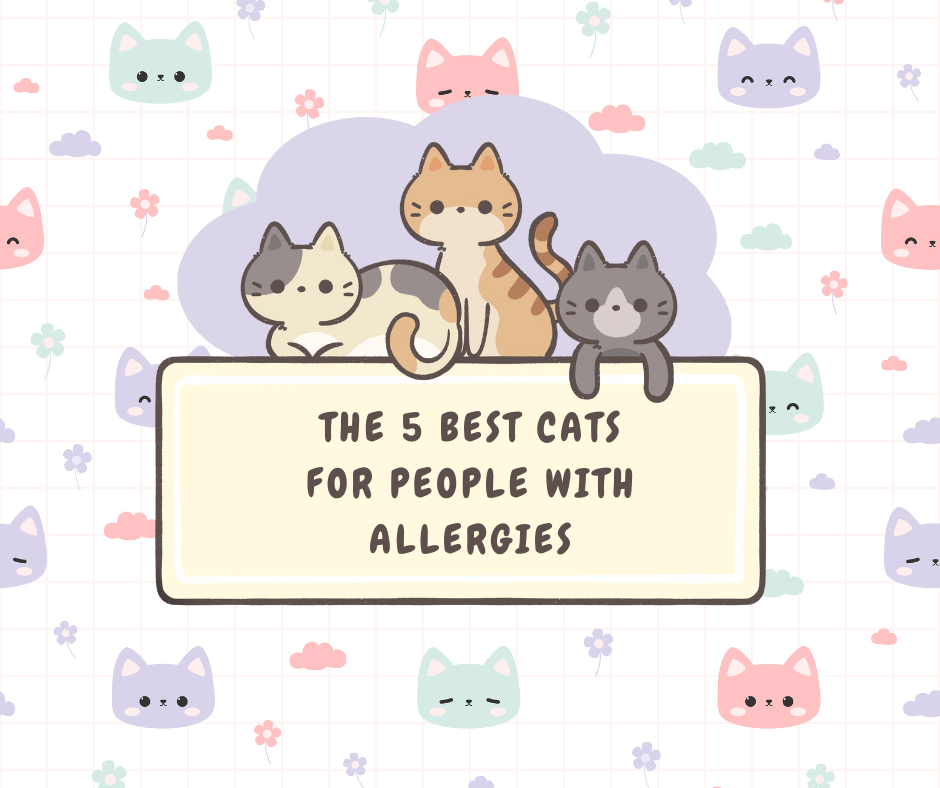There are many reasons why people love cats.
Firstly, they are very cute. Even when they’re purposely ignoring you, they are very cute.
Second, they’re very low maintenance! They love their independence and don’t require as much care and attention, making them the perfect pet for older people or busy bees.
Third, they are very funny. There’s a reason cat videos on the Internet are always a good laugh!
Lastly, cats can be very affectionate, jumping onto our laps or even grooming us. They’re just as good a companion as dogs.
However, getting cats may be a problem because cat allergies are unfortunately very common. All cats produce the allergen in their saliva, which they use to groom their fur. This fur then transfers to furniture and clothes, triggering a reaction.
Thankfully, many cats either do not produce as much of these allergens or do not shed as much. We have listed five of the best cats for people with allergies below.
1. Bengal
No doubt one of the more exotic-looking species of kitties, the Bengal looks more like a wildcat than a domesticated cat due to genetics. The modern-day Bengal is attributed to Jean Mill, a cat breeder and conservationist who started the breed by crossing wild Asian leopard cats and a tomcat. She did this to prevent people from purchasing exotic leopard cats that were ill-suited for home life.
Bengal cats feature leopard prints on their extremely short fur—spots, rosettes, arrowhead markings, and marbling. They shed very minimally which is good news for people with allergies to cats as they love to cuddle and rub against their owners. Bengals have a lot of pent-up energy and need a ton of exercise and playtime to thrive.
2. Russian Blue
As you can tell by its name, Russian Blues have a slight blue tinge to their gorgeous gray fur. Under the sunlight, it gives off a silvery, luxurious look that’s become its trademark. Additionally, these beautiful kitties also have sea green eyes and pink or mauve paws, and their fur is described as being unbelievably soft to the touch.
Though their coat is thick, they do not shed as frequently as their other relatives. There is far less dander floating around, and they also produce less Fel d1 than usual, which is the enzyme that triggers allergic reactions in humans.
Russian Blues are curious yet calm animals. They are naturally empathetic with their owners and are known to be very loyal to them. They are also crazy smart—they have good memory skills and will remember where their favorite toys are located and familiar faces they’re fond of!
3. Siamese
With stunning blue eyes, light-colored fur, and dark ears, tails, and face, the Siamese cat is one of the more easily recognizable species of cats out there. They are descended from the Wichianmat landrace, one of the oldest cat breeds in Thailand. Indeed, the earliest known reference to the Siamese cat comes from an ancient manuscript called Tamra Maew written between 1351 to 1767 AD!
Their coats don’t shed much at all, and they don’t require a lot of grooming. However, you’re going to make up for that in various other ways!
Siamese cats are known for being extremely extroverted. They love being around their owners and even strangers and even often beg for attention with meows akin to the sound of a crying baby. For this reason, people describe them as having more doglike behavior than catlike.
4. Siberian
Although these kitties undoubtedly look super soft and fluffy, they’re surprisingly very hypoallergenic. That’s because their saliva produces far fewer enzymes that trigger allergies and asthma attacks. Female cats, in particular, are recommended by cat breeders to those suffering from cat allergies.
Siberian cats are one of the oldest breeds of cats in existence. Most, if not all, long-haired cats are believed to have descended from them. They come in a wide array of colors and patterns and are still quite rare in the United States due to how expensive importing them from Russia is.
Temperament-wise, Siberians are very affectionate and playful, and many of them love being carried or sitting on laps. They also have a unique interest in water, often dropping toys in their water bowls or being curious about bathtubs.
5. Sphynx
It makes sense that one of the more hypoallergenic cats on the list is a cat with barely any hair at all, doesn’t it? However, just because they lack hair doesn’t mean they’re maintenance-free. In fact, I dare say that they require more care!
In addition to that, sphynxes aren’t entirely hypoallergenic because of the lack of hair. Again, cat allergens are located in their saliva, not their fur. However, bathing them regularly can keep the allergies at bay.
Because of their lack of hair, a lot of oil accumulates on their skin. You need to bathe sphynx cats maybe once or twice a week to get rid of that oil. Additionally, they need adequate temperature control—without fur to keep them warm, they shouldn’t be exposed to cold temperatures for too long and are highly discouraged from going outside where they can easily get too hot or too cold.
Otherwise, sphynx cats are very loving and loyal creatures with bold personalities. Like the Siamese, they are described as being more doglike than catlike. They thrive with attention from their owners and are always open for playtime.










